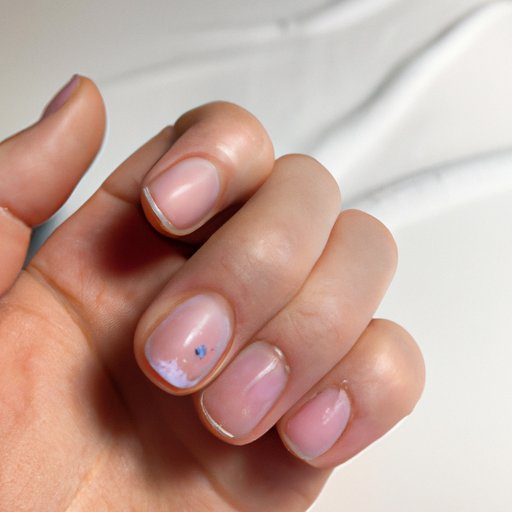Introduction
Nail pitting is a common nail disorder characterized by small indentations in the surface of the nails. It can be caused by a variety of factors, including certain skin conditions, genetic disorders, and certain medications. Nail pitting can affect both fingernails and toenails, although it is more common on the hands. There are various treatments available to help manage the condition, including topical creams and laser therapy. In this article, we will discuss what nail pitting is, its symptoms and causes, and how it is treated.
What Is Nail Pitting? A Closer Look at the Condition
Nail pitting is a condition that causes small pits or depressions to appear on the surface of the nails. The pits may be shallow or deep, and they may vary in size. They can appear as single pits or clusters of pits, and they may be uniform in shape or varied in shape. Generally, nail pitting affects both fingernails and toenails, but it tends to be more common on the fingers. In some cases, nail pitting may be accompanied by other nail changes, such as discoloration, ridges, and brittleness.
Causes of Nail Pitting
The exact cause of nail pitting is not always known, but there are several common explanations. In some cases, nail pitting is caused by a skin condition called psoriasis, which is an autoimmune disorder that causes the body to produce excess skin cells. Other possible causes of nail pitting include eczema, alopecia areata (an autoimmune disorder that causes hair loss), lichen planus (an inflammatory condition that affects the skin and mucous membranes), and fungal infections. In addition, certain medications, such as those used to treat high blood pressure, can also cause nail pitting.
Symptoms of Nail Pitting
The most obvious symptom of nail pitting is the presence of indentations in the nail. Other symptoms may include discoloration, ridges, and brittleness. Nail pitting can also cause pain and discomfort, especially when the nails are exposed to water or come into contact with certain fabrics.

How to Recognize and Treat Nail Pitting
If you suspect that you have nail pitting, it is important to see a doctor or dermatologist for an accurate diagnosis. Your doctor may recommend a biopsy or other tests to confirm the diagnosis and rule out other conditions. Once your doctor has confirmed the diagnosis, they can recommend an appropriate treatment plan. Treatment options for nail pitting may include topical creams, oral medications, laser therapy, and lifestyle changes.
Common Questions About Nail Pitting: Answers From a Dermatologist
Q: What is the best treatment for nail pitting?
The best treatment for nail pitting depends on the underlying cause. In some cases, topical creams and laser therapy may be effective. For severe cases, oral medications such as methotrexate may be necessary. Your doctor can help you determine the best course of treatment for your particular case.
Q: Are there any home remedies for nail pitting?
There are no proven home remedies for nail pitting. However, some people find that certain lifestyle changes can help minimize the appearance of nail pitting. These include eating a healthy diet, avoiding harsh soaps and detergents, and wearing gloves when washing dishes. Your doctor can provide additional tips for minimizing the appearance of nail pitting.
Q: Can nail pitting be prevented?
In some cases, nail pitting can be prevented by avoiding triggers such as harsh soaps and detergents, and by taking steps to reduce stress levels. If you have a skin condition such as psoriasis or eczema, it is important to follow your doctor’s treatment plan to keep the condition under control. This can help reduce the risk of developing nail pitting.
Conclusion
Nail pitting is a common nail disorder that can be caused by a variety of factors, including skin conditions, genetic disorders, and certain medications. It is characterized by small indentations in the surface of the nails, which can vary in size and shape. Diagnosis and treatment of nail pitting should be done by a qualified dermatologist. Treatment options may include topical creams, laser therapy, and lifestyle changes. If you think you may have nail pitting, it is important to seek medical advice to determine the best course of treatment for your particular case.
It is also important to take steps to prevent nail pitting if you are prone to the condition. This may include avoiding triggers such as harsh soaps and detergents, and following a treatment plan for any underlying skin conditions. With proper care and treatment, it is possible to manage nail pitting and maintain healthy nails.


